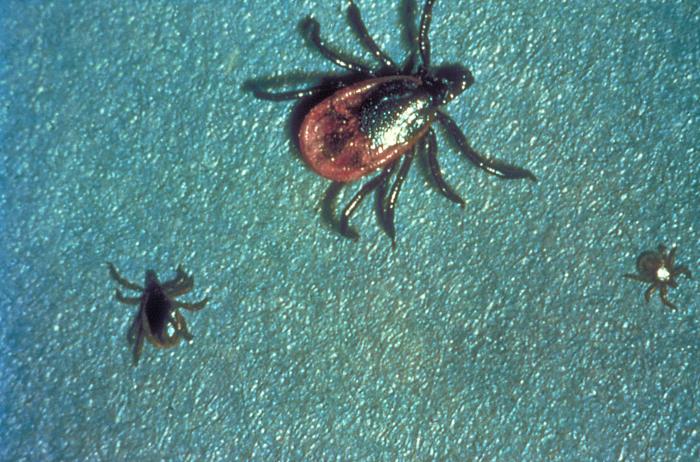Officials with the New York City Department of Health and Mental Hygiene issued a tickborne disease advisory last week for city clinicians to be on the alert for patients with tickborne diseases.

Recent travel to upstate NY, Long Island, and other parts of New England should prompt consideration of tickborne diseases. A history of a tick bite is not a prerequisite for considering tickborne diseases for patients with compatible illness, since only a small proportion of patients diagnosed with these diseases recall being bitten by a tick.
Tickborne diseases in NYC have been trending upward since 2000, with fluctuations from year to year.
In 2017, the number of anaplasmosis and babesiosis cases approximately doubled in all boroughs except Queens, compared to 2016. There was a slight increase in Lyme disease cases in Brooklyn, Manhattan, and Queens.
Incidence rates of tickborne diseases are typically significantly higher in residents of Manhattan compared with other boroughs. However, since 2015, Staten Island has had the highest incidence rate of Lyme disease in NYC, which may be due to an increasing number of locally acquired cases.
Local transmission of babesiosis was also reported in the Bronx and Staten Island and there was one report each of locally acquired anaplasmosis and ehrlichiosis in Staten Island residents. Blacklegged ticks collected in the Bronx and Staten Island have tested positive for Borrelia burgdorferi and Babesia microti. Locally acquired RMSF cases while rare, have been reported in the past from all five boroughs.
Tickborne diseases may also be transmitted via blood transfusion. In 2017, there was one transfusion-associated babesiosis case and the first anaplasmosis case acquired from a blood transfusion in NYC.
A look at tick surveillance in NYC shows Ixodes scapularis (blacklegged tick or deer tick) has become widely established in Staten Island, and focal areas of the Bronx including Pelham Bay Park and Hunter Island. It is not established in other areas of NYC.
In 2016, ticks collected from parks in the Bronx (47%) and Staten Island (19%) tested positive for Borrelia burgdorferi.
A much smaller number of ticks in the Bronx and Staten Island tested positive for Anaplasma phagocytophilum (0.06-10%), Babesia microti (0-6%) and the emerging pathogen, Borrelia miyamotoi (2%).
- Zika, West Nile, Lyme and other vector-borne diseases triple in the US over the past decade
- Lyme disease: New research on Borrelia burgdorferi persistence
- Lyme disease treatment: Some thoughts
- The history behind the Lyme disease controversy and what’s new in Lyme research
- Lone star ticks do not transmit the Lyme bacteria: Entomologist
- A look at the differences in geographical distribution of Lyme disease
- A new Lyme disease test: Dr Richard Marconi discusses the GLD Test
- Lyme disease, Stevia and the quest for better treatments
- Lyme disease: Borrelia biofilm in the body demonstrated
- Powassan virus: The spread is inevitable
- Lyme: Q & A with Paul Auwaerter, MD
- Lyme Disease Awareness Month: Prevention, symptoms, diagnosis and treatment
- Lyme disease: Olivia’s story, the LivLyme Foundation and the TickTracker app
- Lyme Madness: An interview with Lori Dennis



It would be prudent to mention in advisory that Lyme and other tick-borne diseases such as Babesiosis can be transplacentally transmitted from mother to baby. Pregnant woman with symptoms should be assessed clinically with testing being used as supportive date per CDC. As more and more people become infected this risk for moms and babies will increase. Not enough focus on this risk of transmission
A lot of people are traveling to the tic endemic hamptons on the weekends